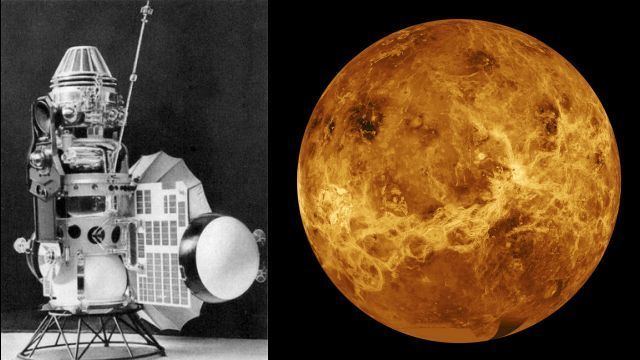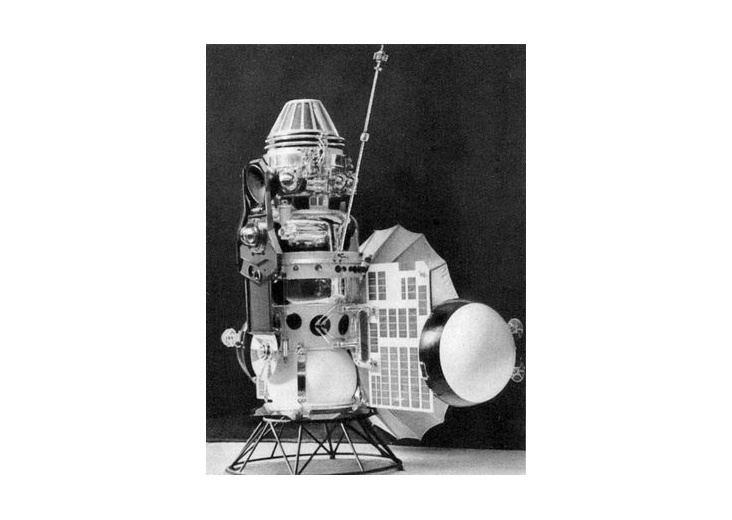Operator OKB-1 SATCAT no. 1733 Landing mass 377 kg (831 lb) Mission duration 3.5 months | COSPAR ID 1965-092A Launch mass 960 kg Launch date 16 November 1965 | |
 | ||
Similar Venera 7, Venera 4, Venera 1, Venera 6, Venera 14 | ||
Venera 3 (Russian: Венера-3 meaning Venus 3) (Manufacturer's Designation: 3MV-3) was a Venera program space probe that was built and launched by the Soviet Union to explore the surface of Venus. It was launched on 16 November 1965 at 04:19 UTC from Baikonur, Kazakhstan, USSR.
Contents

During 1965, the Central Committee, frustrated at the poor track record of Sergei Korolev's OKB-1 design bureau, reassigned the planetary probe program to the Lavochkin Bureau. In over two dozen attempts dating back to 1958, Luna 2 and Luna 3 were the only probes to complete all of their mission objectives. In the meantime, the United States had succeeded with the Mariner 2 Venus probe and Mariner 4 Mars probe, and after a long string of lunar probe failures, Ranger 7 successfully impacted the Moon.
The Lavochkin Bureau began a comprehensive testing program of the Venera and Luna probes, while Korolev had always opposed the idea of bench tests except on manned spacecraft. Among other design flaws they discovered was that the Venera landers, after being subjected to a centrifuge test, failed at half the G forces they were supposed to handle.

Mission

The mission of this spacecraft was to land on the Venusian surface. The entry body contained a radio communication system, scientific instruments, electrical power sources, and medallions bearing the Coat of Arms of the Soviet Union.
The probe possibly crash-landed on Venus on 1 March 1966, making Venera 3 the first spacecraft to impact on the surface of another planet. However, its communications systems failed before it reached the planet.
Non-scientific equipment

Scientific equipment
L
